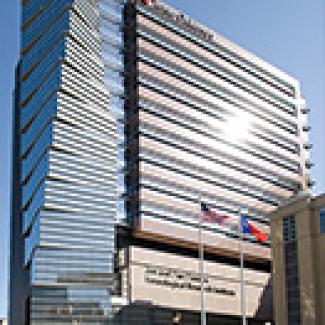
Neurological Research Institute hosts a unique symposium on Neurodegeneration
 Recently, 400 people from around the world gathered at the Baylor College of Medicine’s Cullen Auditorium to attend an exciting two-day symposium organized by the Neurological Research Institute (NRI) at Texas Children’s Hospital and Baylor College of Medicine.
Recently, 400 people from around the world gathered at the Baylor College of Medicine’s Cullen Auditorium to attend an exciting two-day symposium organized by the Neurological Research Institute (NRI) at Texas Children’s Hospital and Baylor College of Medicine.
The conference titled, “Neurodegeneration: from Cellular Concepts to Clinical Applications,” was co-organized by Dr. Huda Zoghbi, professor at Baylor College of Medicine, Howard Hughes Medical Investigator and the director of the Dan and Jan Duncan NRI at Texas Children’s, and Dr. Bart de Strooper, research director of the VIB Center for the Biology of Disease at the University of Leuven, Belgium.
In 2012, NRI leaders inaugurated a biennial series to bring together experts from academia, the biotech and pharmaceutical industries, federal and private funding organizations, patient families and caregivers. The aim of this conference series is to highlight emerging trends in basic research and promising therapies for various neurological diseases. This year’s conference was the third in this series.
This conference series is uniquely structured to maximize active participation by all audience members. Such an open forum provides an excellent environment for lively discussions and debates among the various stakeholders (scientists, clinicians, donors, administrators and parents) on a variety of topics ranging from scientific data to policy and funding issues.
The first day of the conference was devoted to oral presentations by world-renowned neuroscientists on a variety of research areas related to neurodegeneration. The talks were interspersed with Q&A sessions and stimulating panel discussions. All the audience members were invited to participate in these discussions and did so with a great deal of enthusiasm and interest.
The day concluded with dinner workshops on three different research topics. These workshops included speakers and a select group of guests, ranging from established researchers to junior investigators and postdoctoral fellows. Members of these working groups were charged with the dual mission of highlighting cutting-edge scientific trends, as well as to identify challenges and obstacles in the scientific processes, funding, tenure policies and the overall scientific culture.
Leaders of working committees shared the results of their findings with the audience the following day. In addition, leaders from the pharmaceutical industry and NIH directors also shared their valuable insights, which sparked further debates and stimulating discussions. Interestingly, these open and frank exchanges culminated in a series of excellent recommendations for the academic community, pharmaceutical and funding agencies, which if implemented, can accelerate the pace of scientific discovery.
To conclude, this unique conference series not only spotlighted the latest scientific trends and promising new therapies for neurodegenerative diseases but also proved to be an exceptional platform to foster scientific discovery and innovation.